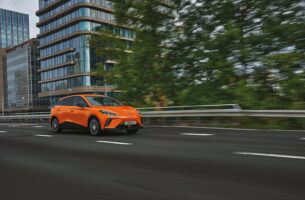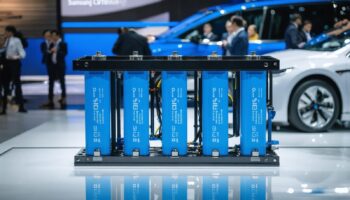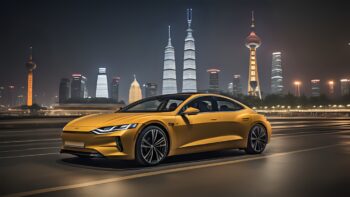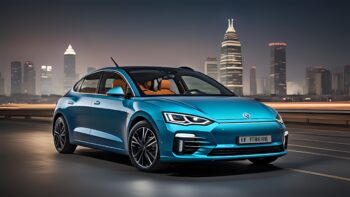Concept car A48V: Dynamic and efficient driving thanks to 48V
Concept car A48V: Dynamic and efficient driving thanks to 48V
- 48V mild hybrid concept vehicle from the FEV Group combines Boost Recuperation Machine (BRM) from SEG Automotive with an additional electric compressor in the Mercedes AMG A45
- 48V BRM leads to increased efficiency and greater comfort
- Responsive acceleration is achieved even at low speeds thanks to electric torque support and electrified turbocharging
Driving dynamically or driving efficiently? This does not need to be a contradiction anymore, as the new concept vehicle A48V from the development service supplier FEV and automotive supplier SEG Automotive. Through 48V mild hybridization powered by the Boost Recuperation Machine (BRM) from SEG Automotive, driving not only becomes more enjoyable and fun, but also more efficient.
48V mild hybridization offers great potential to increase the efficiency of conventional powertrains. For this purpose, a powerful 48V belt starter generator, in this case the BRM from SEG Automotive, replaces the conventional 12V generator. This requires only minor modifications of the powertrain and therefore entails comparatively low costs. The 48V BRM enables hybrid functions such as brake energy recovery (recuperation), electrical torque support, load point optimization and particularly smooth start/stop engine starts. In addition, the increased electrical power enables the use of power hungry consumers or safety features. All the while the BRM from SEG Automotive significantly reduces CO2 emissions.
With its A48V, FEV – an internationally renowned service provider in vehicle development – demonstrates the real life driving benefits of the 48V technology. The concept vehicle, which FEV developed in cooperation with SEG Automotive and the Chair of Internal Combustion Engines at RWTH Aachen University, uses a 48V BRM in combination with an electric compressor to significantly improve responsiveness, efficiency and comfort. The use of the BRM from SEG Automotive is beneficial in two respects. It improves the response time of the four-cylinder engine significantly and at the same time decreases fuel consumption.
With the aid of the electric compressor, the maximum torque of the combustion engine is reached at just 1600 rpm – 650 rpm earlier than in a standard AMG A45 vehicle. In addition, the boost function of the BRM provides additional torque to the combustion engine. This results in a significantly improved response of the engine and an even more intense acceleration experience. This is particularly noticeable driving off after a stop or at low rpms. At the same time, the BRM enables extremely comfortable start/stop functionality. The high torque capacity of the BRM ensures an almost immediate engine start, which effectively avoids comfort-impairing resonances, which can occur with conventional 12V start/stop systems.
The BRM also makes a significant contribution to increasing efficiency. Upon braking, part of the kinetic energy is recovered and stored in the 48V battery. The coasting function opens up further potential: During coasting phases, the combustion engine is decoupled from the transmission and switched off. As a result, the vehicle can maintain kinetic energy and coast for longer by avoiding the friction losses of the combustion engine. When the driver wants to accelerate, the combustion engine is smoothly and immediately restarted and reengaged into the powertrain. In real operation, the BRM saves up to 15 percent fuel and to the same degree CO2 compared to conventional systems.
Predictive coasting and recuperation
In another cooperation project between FEV, SEG Automotive and the Chair of Internal Combustion Engines at RWTH Aachen University, the coasting function was further optimized by a predictive recuperation function.
For this purpose, a camera-based sensor system detects the vehicles travelling ahead of the car. As the driver takes his foot off the accelerator, a prediction algorithm calculates whether it makes sense to switch into coasting mode or whether deceleration is necessary in order to avoid tailgating. The BRM automatically regulates the degree of deceleration so that the mechanical brake system is not required. This increases comfort, as the driver does not have to intervene and it raises the amount of energy recovered, which has again a positive effect on fuel consumption. The predictive coasting and recuperation strategy is a prime example of how the efficiency of the powertrain can be significantly increased by intelligent software functions.
Source: SEG Automotive









